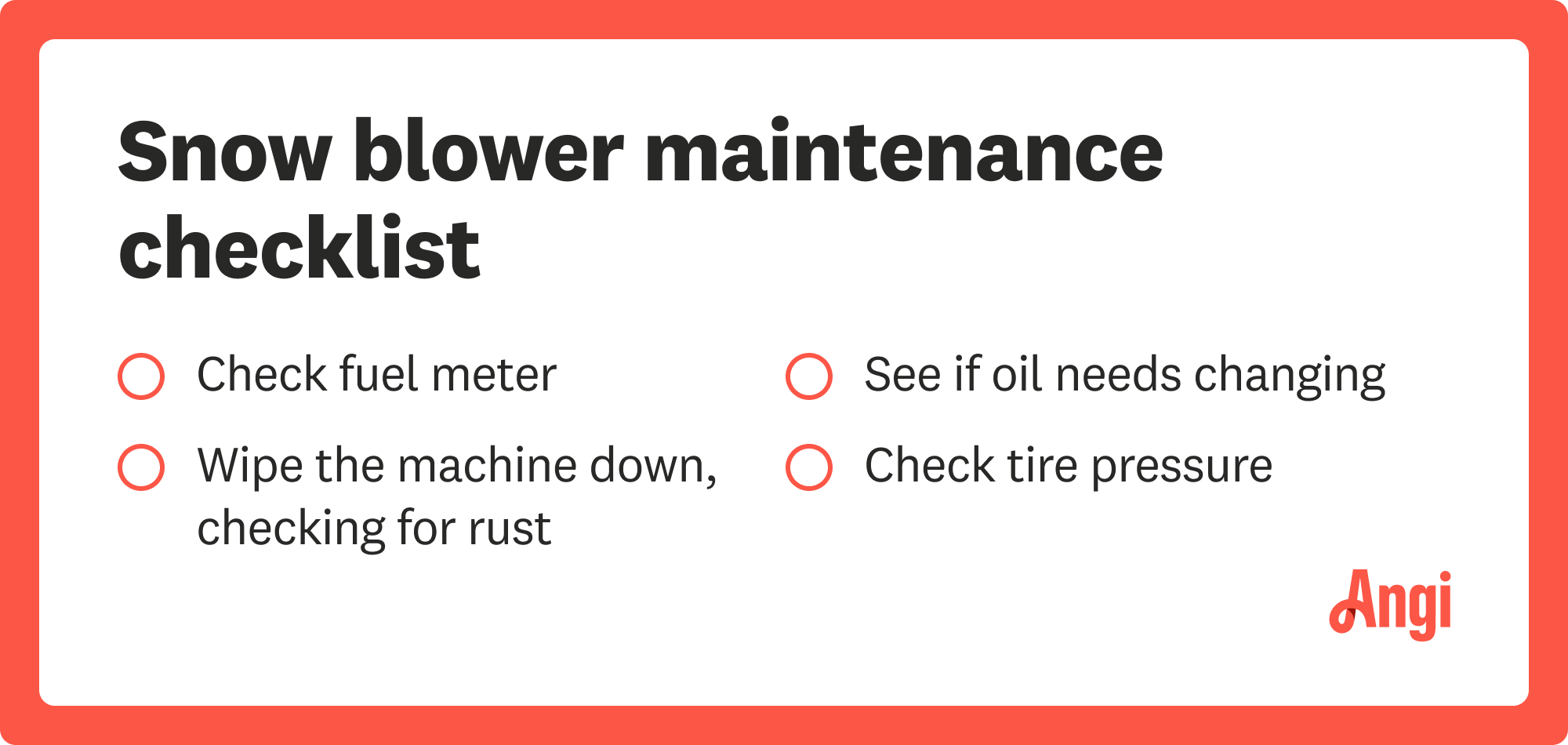8 Tips to Keep a Snow Blower Running
You won’t even need your snow shoes this winter


A snow blower is a worthy investment if you live in a cold winter climate. But if your blower breaks down and needs repair, it can throw off your entire schedule—and budget. Snow blower repairs can be costly, depending on the issue at hand and the age of your machine. Avoid these challenges altogether by following our top tips for snow blower maintenance to keep your machine running smoothly all winter long.
1. Inspect the Belts
If the belt is malfunctioning, your snow blower won’t be able to move forward. If you’re not experienced with basic mechanics, it can be safest and easiest to hire a snow removal company to help repair your snow blower.
2. Change the Oil
Similar to how you’d change the oil in your car and lawn mower to keep it running smoothly, your snow blower needs it too. Check your snow blower’s owner’s manual to see how often you need to change the oil in your individual machine. If you know how to change the oil yourself, you can buy the oil at your local hardware store or online. If not, a pro can do this for you when you schedule a tune-up.
3. Check Tires and Chains
Ensure the tires are at the right pressure and the chains are lubricated and aligned at the beginning of the winter season.
4. Examine the Skid Shoes
Skid shoes set the minimum depth the snow blower will scoop up snow. If you adjust the skid shoes, the machine won’t scrape the ground, and you won’t throw rocks if you’re plowing a rough surface, such as a gravel driveway.
5. Check the Auger
The auger is the part that pulls in snow so that the snow blower can shoot it off the driveway or sidewalk you’re plowing. This means the auger is essential for a snow blower to function. A professional snow blower repair expert can check and replace the auger, if needed. They can also review the other necessary parts on this list.
6. Replace the Spark Plug and Air Filter
The spark plug helps get your snow blower’s engine running. Most snow blowers don’t actually have an air filter, but if yours does, this is also something to check.
7. Gas It Up

This goes without saying: Before you can use your snow blower, it needs to have sufficient fuel. It’s helpful to always keep a safe gas canister filled in your garage after each use so you can refuel as needed without having to make a trip to the gas station in a snowstorm. This way, you can use your snow blower right away in the moments when you need it most.
If you’re storing gasoline in your garage for several months, there are fuel stabilizer products you can purchase to mix in with the gas to keep it fresh and usable.
8. Keep Up Regular Snow Blower Servicing
Your snow blower should be serviced annually to keep it in good condition long-term. You can schedule maintenance work with your local snow removal pros for professional service or DIY by following a simple snow blower maintenance checklist. Keep in mind a large part of taking care of your snow blower involves keeping up a steady oil and gas supply. Change the oil at the start of each winter season, and regularly monitor the gas meter as you use your machine.
Leah Lopez Cardenas contributed to this article.

Frequently Asked Questions
You should store your snow blower properly after winter ends by:
Cleaning it thoroughly
Greasing the lubrication points
Tightening the screws
Storing your snow blower in your garage, storage unit, or home during the off-season protects it and maximizes its longevity. Before storage, you should run the engine to drain all the fuel. That will protect the engine and prevent fire hazards. Once it's stored, cover the snow blower with a blanket or tarp to prevent dust or dirt from damaging the mechanical parts. Finally, store it at a safe distance from areas exposed to potential open flames or sparks, such as water heaters, furnaces, and clothing dryers.
Purchasing a snow blower costs $100 to $2,300 on average. It all depends on the make, model, and age of the machine you choose. You can also go the rental route if you only need your snow blower for a temporary period. Renting a snow blower costs an average of $75 per day from your local hardware store or rental facility.
Along with the engine, belt, tires, and chains, there is a small, easily forgotten piece of a snow blower that can break: the shear pin. Shear pins are weak pins connecting the auger to the auger shaft. These will break intentionally to alert the user that a large object has impacted the moving auger, stopping the machine to prevent risking further damage.

